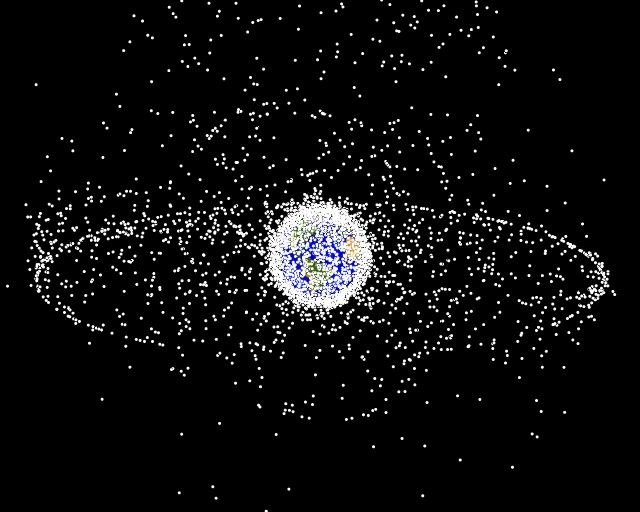Deepwater Horizon: The Space Connection

Watching the new movie Deepwater Horizon reminded me of an incident that highlights the need for humanity to expand its environmental perspective to encompass outer space along with Earth.
Thanks to data from Envisat, the European Space Agency’s large Earth-observing satellite, French scientists were able to alert American officials in May 2010 that the BP oil spill in the Gulf of Mexico had entered the powerful loop current flowing toward Florida. Just a few months earlier, though, the spacecraft had experienced a near calamity of its own because of an environmental disaster in space caused by human beings.
When U.S. radar data indicated Envisat would speed by a discarded Chinese rocket at a distance of 160 feet, a hair’s breadth in orbital space, it had to fire its thrusters and perform a collision avoidance maneuver. Even a piece of debris the size of a centimeter can damage or destroy a satellite in a collision because it travels at speeds up to 17,500 miles per hour.
The spent rocket was a leftover from China’s test of an anti-satellite weapon (ASAT) in 2007. When it struck its target, an old weather satellite, the SC-19 missile with a kinetic kill warhead produced more than 100,000 pieces of orbiting debris. Over 100 satellites pass though this cloud of space junk on a regular basis, including the flagship of NASA’s Earth Observing System, the Terra spacecraft, which carries a payload of five remote sensors designed to monitor changes in our planet’s environment.
Lee Billings, who writes for Scientific American, believes the most dangerous military flashpoint in the world today is not the Korean Peninsula, Iraq, or Ukraine but low Earth orbit where remote sensing satellites reside. China, Russia, and the U.S. are all developing and testing new capabilities to conduct war in this domain because outer space has become the ultimate high ground in modern warfare.
To its credit, the Obama administration tried to consult with international allies about establishing a verifiable moratorium on the testing and use of ASATs in 2014 but was blocked by Congressional opponents who want the U.S. to retain maximum flexibility to develop and use new space weapon systems. In 2015, the European Union tried to negotiate an International Code of Conduct for Outer Space Activities at the United Nations, including a prohibition on the intentional destruction of satellites, but was thwarted by Russia and China.
Though billed as a sci-fi thriller, the blockbuster movie Gravity depicts a scene that is all too easy to imagine. Debris generated by a Russian anti-satellite weapons test disables the shuttle Explorer, demolishes the International Space Station (ISS), and leaves crew members played by Sandra Bullock and George Clooney adrift. In reality, the ISS has been forced to perform some twenty-five collision avoidance maneuvers and astronauts have sheltered in space capsules several times when debris passed too close for comfort.
Given the failure of recent diplomatic efforts to curb the arms race in space, it is important for people of faith to remind political leaders that orbital space is a valuable natural resource. It should be protected from irresponsible behavior and developed for the social and economic benefit of all humankind.
Rev. Robert Bachelder is Minister and President of the Worcester Area Mission Society, UCC in Massachusetts and author of the General Synod resolution on responsible stewardship of the outer space environment.
Related News
Joy, Love, and Climate Action: A Church Draws from Ayana Elizabeth Johnson
At First Congregational Church, UCC, in Colorado Springs, CO, our Climate Justice Leadership...
Read MoreAn ally experiences PRIDE in the CLE
Advocacy and Action for Women's and Gender Justice Local events stir thoughts and...
Read MoreVote for Climate Hope Congregation Toolkit
After having witnessed the wonderful Climate Hope art of UCC children and youth, we are now...
Read More

